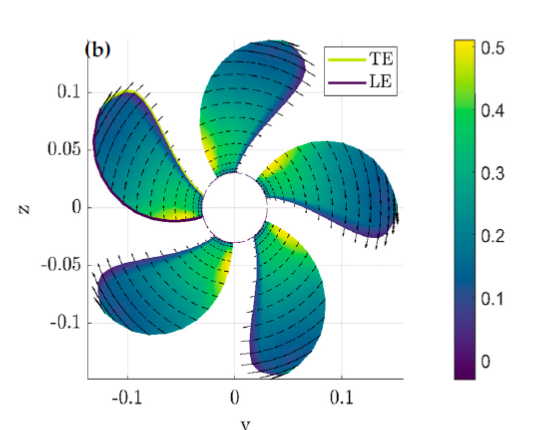
EFFICIENCY ENHANCEMENT OF MARINE PROPELLERS VIA REFORMATION OF BLADE TIP-RAKE DISTRIBUTION
Dimitra Anevlavi, Spiros Zafeiris, George Papadakis & Kostas Belibassakis
School of Naval Architecture and Marine Engineering (NTUA)
Correspondence: kbel@fluid.mech.ntua.gr
ABSTRACT
This work addresses the effects of blade tip-rake reformation on the performance of marine propellers using a low-cost potential-based vortex-lattice method (VLM) and the high fidelity artificial compressibility CFD-RANS solver MaPFlow. The primary focus lies on determining whether the low-cost VLM, in conjunction with a multidimensional parametric model for the tip-rake and pitch/camber distributions, can produce a propeller geometry with improved efficiency. Due to the availability of experimental and numerical data, the NSRDC 4381-82 propellers were selected as reference geometries. Torque minimization serves as the objective function in the gradient-based optimization procedure under a thrust constraint, which translates into efficiency enhancement at the selected design advance ratio. The optimized 4381 propeller yields a +1.1% improvement in efficiency based on CFD-RANS, whereas for the modified skewed 4382 propeller, the efficiency gain is +0.5%. The performance enhancement is also evident at a region near the design advance ratio. The results suggest that the exploitation of low-cost VLM solvers can significantly reduce the CFD simulations required in the optimization process and thus can be effectively used for the design of propellers with tip-rake reformation.














